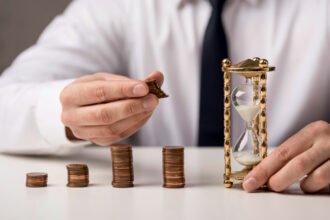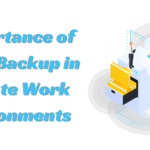Margin Vs Future Trading: What’s the difference?
- 1 How Do You Do Margin Trading?
- 2 How Do You Do Future Trading?
- 3 How Is Future Trading Different From Margin Trading?
- 3.1 Leverage
- 3.2 Risk
- 3.3 Think about it
- 3.4 Contracts used to make agreements
- 4 How Are You Going to Choose?
- 5 Comparison of Future Trading and Margin Trading: Five Key Points
- 6 In conclusion
Margin Trading and Future Trading are like two giants in the trading world. Both help traders make a lot of money by letting them handle prominent trade positions with little money. This is possible because of leverage, which raises the funds that can be gained or lost from a trade. While Future Trading and credit trading use leverage, they are not the same in many ways. The primary distinction between margin trading and Future Trading is the type of assets they involve. If you are having trouble explaining the difference between the two ideas, this page will fully explain.
How Do You Do Margin Trading?
Margin trading uses borrowed money to buy stocks or cryptocurrencies through a brokerage or cryptocurrency exchange. Investors with smaller amounts of money can invest in assets they choose by borrowing money from the trading platform. This is useful for people who want to build large trading accounts to make money. You could think of an MTF as a game you play in a casino. Some things about margin dealing are like gambling, even though it’s not gambling.
Because, like in gaming, you can win a lot with little. But there is also the chance of total ruin. People who want to borrow money from crypto credit trading platforms must first put up collateral. The trading site can get their money back when their trades start making money. Since these are speculative bets, there is a good chance that the capital will be lost if the trading situation doesn’t do as well as expected.
How Do You Do Future Trading?
Anyone who wants to trade futures must agree to buy or sell an object at a set price and on a set date. This kind of trading occurs in future markets and involves things that aren’t physical. People who have signed a futures contract agree to trade ownership of an asset at a specific price when its value hits a certain level on a particular date. Future Trading buying is a lot like betting on horse races. In the same way that you bet on a horse to win a race, you bet that the value of a cryptocurrency asset will hit a specific price on a certain date. Future contracts also take a long time, like horse race bests. Through futures, which also use leverage, investors can buy much of an object for a lower price. Investors can get into good deals even if they don’t have much money. With the help of solid technical tools like crypto Future Trading bots, this process is now automated and works better than the old ways.
How Is Future Trading Different From Margin Trading?
Leverage
As we’ve already said, Futures Trading and credit trading depend on borrowing money. Investors can take advantage of substantial trading opportunities even if they have a small amount of money, which is possible with trading site loans.
Risk
It is hazardous to trade futures or with leverage because it raises the chances of both winning and losing. Even if investors initially spend only a tiny amount of money, they stand to lose a lot if the asset price goes against what they thought it would be.
Think about it
Futures dealing and using margins are both hazardous things to do. Many people invest in the stock market because they think prices will hit a certain level. This is when past market performance and price details come in handy.
Contracts used to make agreements
Traders and broker platforms sign legal contracts when they trade futures or on credit. These agreements spell out the required margin, the product’s price, the date the futures contract ends, and more.
How Are You Going to Choose?
Should you choose Future Trading or credit trading? There are many things to think about. Here are some examples:
- This is because losses in Future Trading can quickly exceed the original margin deposit, making it seem riskier than margin trading. Traders who can handle a lot of risk might do better with Future Trading, while traders who can handle less risk might do better with debt trading.
- Traders should consider their trading goals when choosing between trading futures and trading on credit. Future Trading may be better for people who want to make a lot of money quickly, while margin trading may be better for people who want to spend for the long term.
- Another thing traders should consider is what kinds of products they like to trade. Future Trading usually involves commodities, indices, stocks, and currencies. Margin trading, on the other hand, lets you trade a wide range of assets.
- For futures and credit trading, you need to know much about how markets work and how to use technical analysis. Before using any method, traders should figure out how much they know and how skilled they are.
No matter what trade method is used, it is essential to have a clear trading plan. This plan should include disciplined trading, ways to handle risk, and straightforward entry and exit spots. Also, traders must be ready to change their strategy and constantly learn more about the market.
Comparison of Future Trading and Margin Trading: Five Key Points
- In Future Trading, different types of assets are bought and sold. These include stocks, bonds, commodities, indices, derivatives, and spot market assets. In margin trading, many more types of assets are bought and sold.
- Most buyers who use margin trading only plan to keep their money in the account for a short time. On the other hand, people with a longer-term view should consider trading futures.
- When you trade commodities, you can use up to 100% leverage, but when you trade on margin, it’s usually between 5% and 20%. These factors make Future Trading more risky and allow traders to make or lose money.
- When you trade on margin, you put up collateral, which trading sites use to lend you money. To make a futures deal, on the other hand, you need to put down a good-faith deposit.
- When traders use margin trading, they can keep their goods for as long as they want without expiration dates. But, as we already said, there are set dates when Future Trading must stop.
In conclusion
Future Trading and margin trading are both precarious ways for buyers to get into big trades, but they can also be very profitable. These trading strategies are also very advanced, so they are best for players with a lot of experience. So, traders who use these trading strategies need to do their research and make intelligent business decisions.
FAQs
1) How much money do I need to lay down or sell futures?
The amount of money you need to put down to trade futures or on margin may be different from one broker to the next and from one product to the next. Future Trading generally gives you more leverage than margin trading, but margin trading sometimes requires a smaller initial margin deposit.
2) Is it risky to trade futures or use credit?
There is more danger in Future Trading than in margin trading because losses can easily be bigger than the initial margin deposit. Due to the high level of risk, these strategies should only be used by players with a lot of knowledge and experience.
3) What and why is it so important to have a clear trade plan?
A trading plan is a set of rules and guidelines that traders use to decide when to enter and leave trades and how much risk to take. Follow a well-thought-out trading plan to avoid making hasty choices based on feelings and keep your losses to a minimum.


















